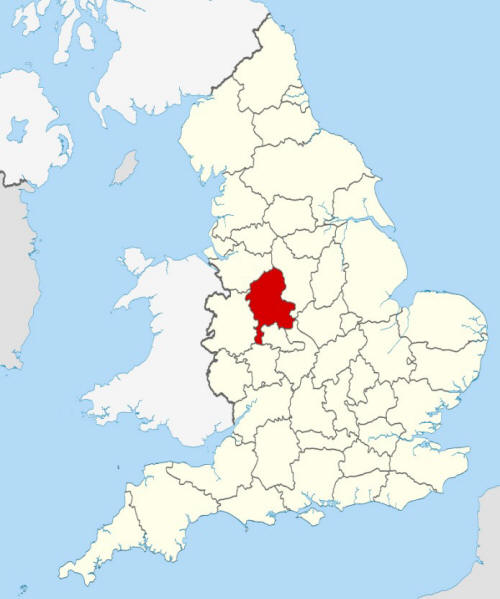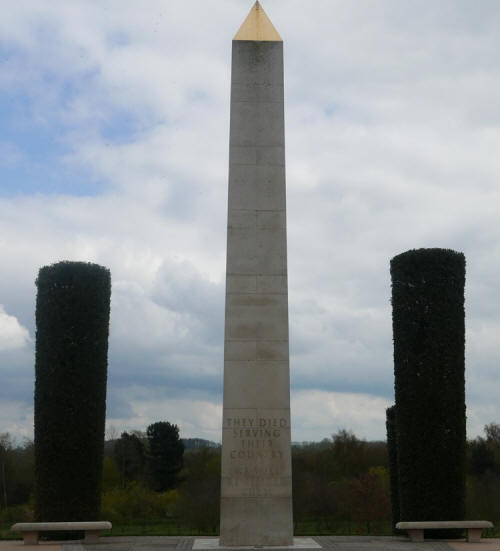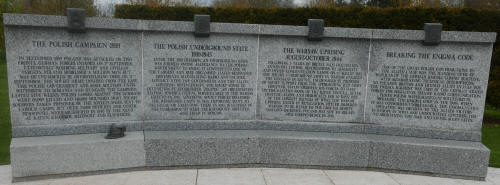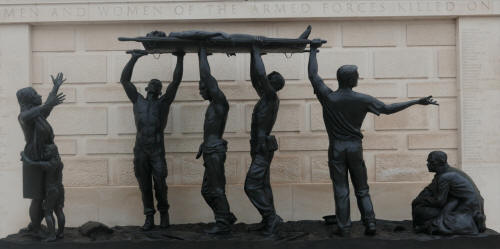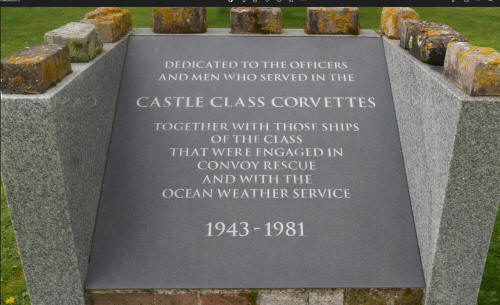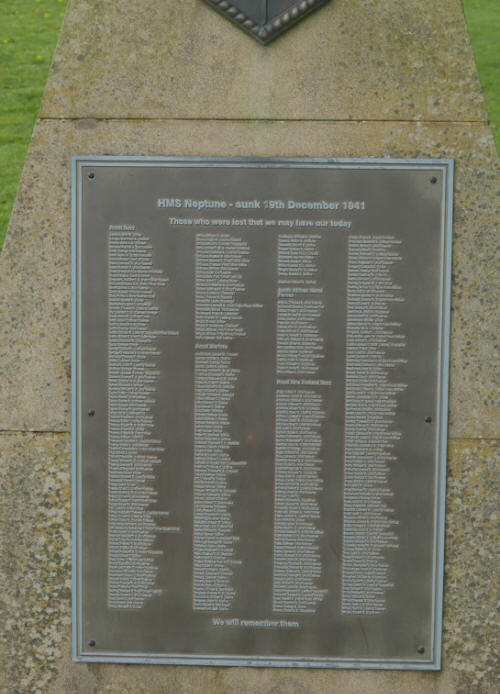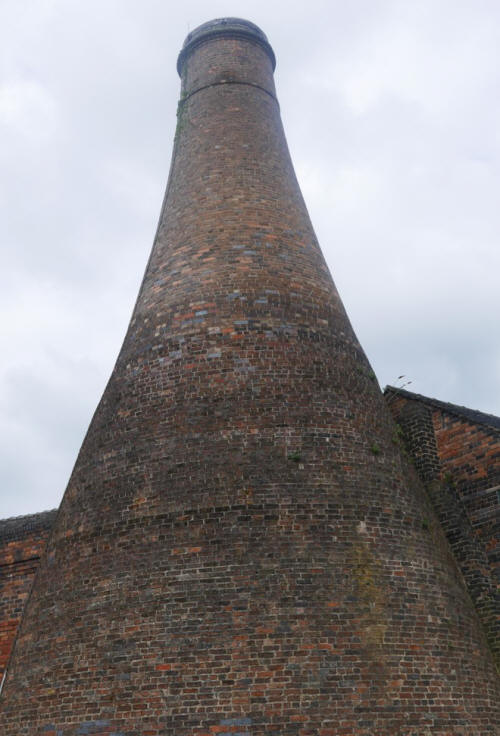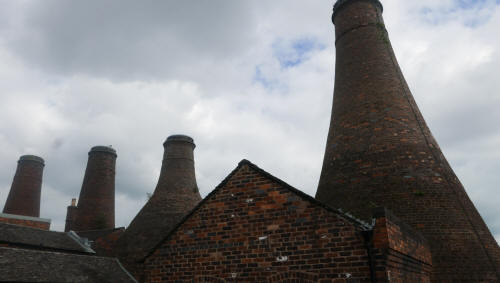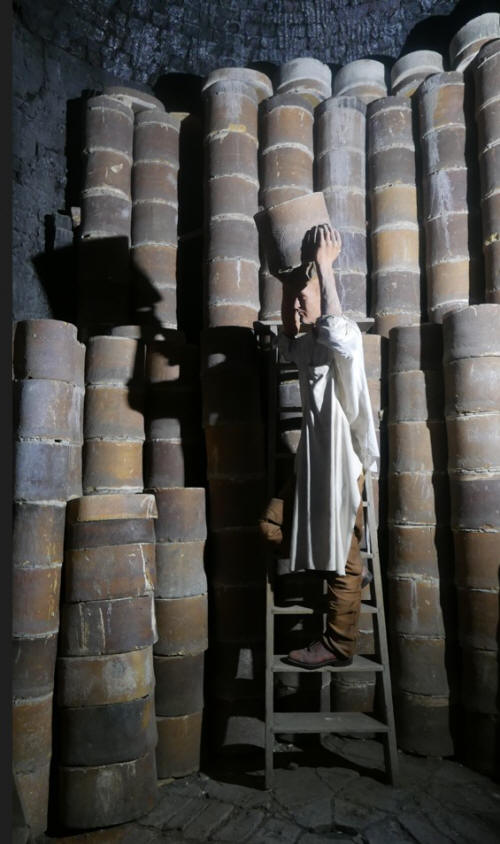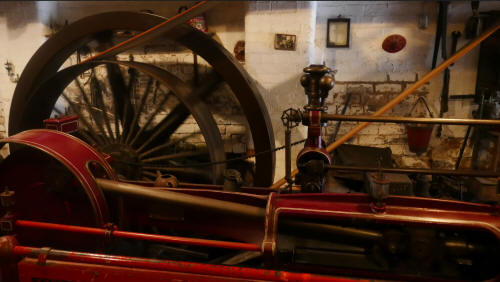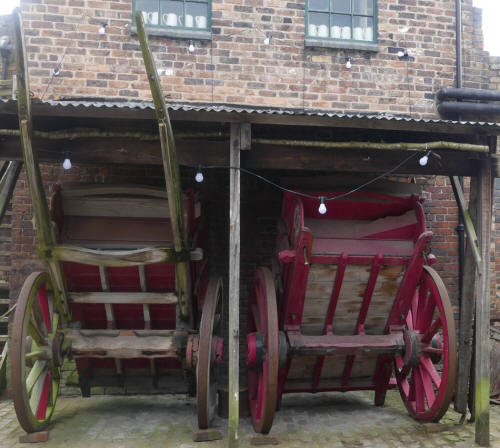Lichfield Cathedral
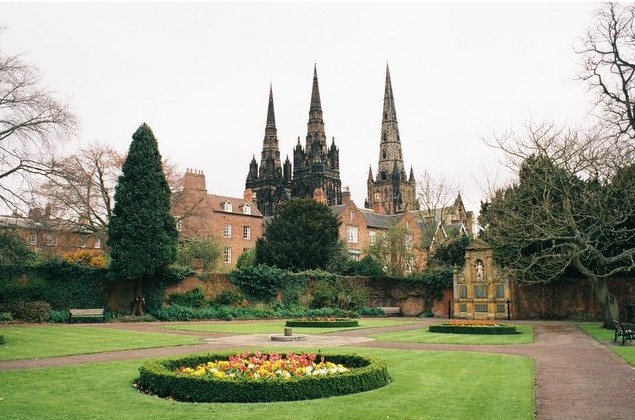
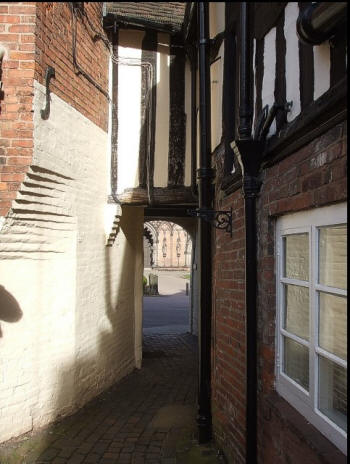

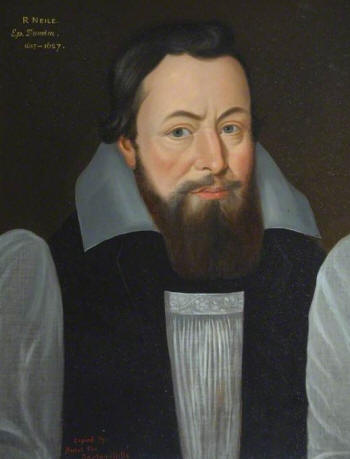
Above, Richard Neile, Bishop of Lichfield. The Bishop, King James
(best known for the translation of the Bible which he sponsored, the 'King
James Bible') and others in the Church were determined that Edward Wightman
should be burned alive for heresy, and Edward Wightman was burned alive, in
1612.
More on this hideous episode, one episode amongst a vast number of
other episodes, in the second column of my page
Billingsgate:
Blasphemy, Heresy,
Witchcraft, Burning to Death. King James and the King James Bible
(Authorized Version). Bible-based dotrine and Bible-based barbarity. The
Lichfield Connection.
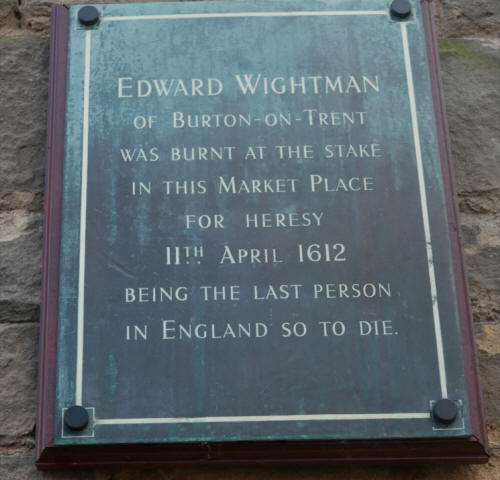
Above, plaque in the Market Place, on a wall of St Mary's Church, a
Church no longer, now used by 'The Hub at St Mary's,' which describes itself
as a 'creative space ... '
The plaque is on a wall, near to the entrance to the 'creative space' but
well above head height. It wouldn't be noticed by most of the people who go
to the Market Place. The plaque should surely have a much more prominent
place. It belongs to the history of Lichield, and the event commemorated has
significance which goes well beyond Lichfield. It has national, in fact,
international importance in important aspects of history: humanitarian
history and the history of free expression. Edward Wightman had make known
his opposition to the doctrine of the Trinity, amongst the other 'heresies'
which led to his being burnt alive.
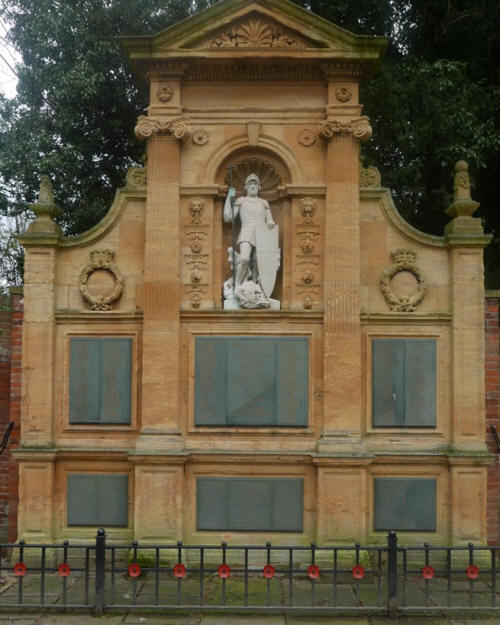
Above, a view of the War Memorial, of Portland stone, in the Garden
of Remembrance, Lichfield, a beautiful, evocative and harmonious place. This
photograph and the photograph below taken by me.
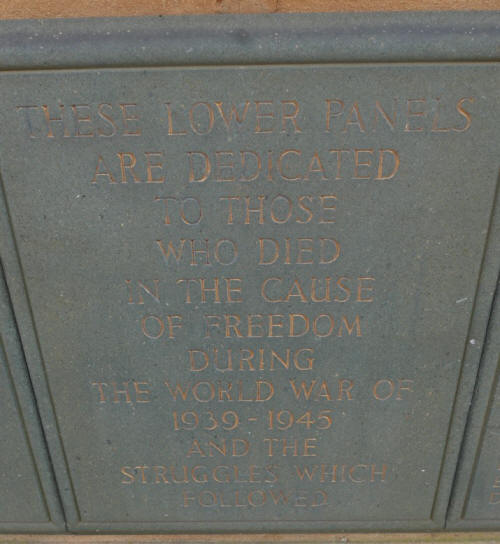
The War Memorial was constructed after the First World War to
commemorate those who fell in the conflict. Other panels were added to
commemorate those who fell in the Second World War and other conflicts. The
wording on the panel shown in the image above:
'These lower panels are dedicated to those who died in the cause of
freedom during the World War of 1939 - 1945 and the struggles which
followed.'
The linkages between aesthetic history and ethical history (which
includes humanitarian history and the history of freedom of expression) are
many. The contrasts between aesthetic history and ethical history have often
been ignored.
The Garden of Remembrance and the War Memorial show aesthetic
strengths in conjunction with very strong ethical strengths, but often,
there is lack of linkage, disproportion, grotesque disproportion.
Buildings and places which are aesthetically outstanding have
often been - still are - ethically poor, or much worse than that. Lacklustre
buildings and places may be ethically outstanding or ethically lacklustre or
ethically poor, or much worse than that. There's a similar range of
possibilities in the case of ugly buildings and places.
This is a statue of Henry Ryder, an evangelical Bishop of Lichfield
and Coventry between 1824 and 1836. The statue is surely lacklustre, an
example from the vast mass of commonplace statuary to be found in Churches
and Cathedrals which fails to achieve aesthetic distinction.
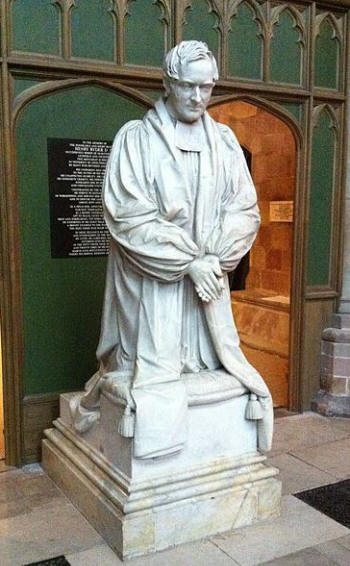
This is a statue of 'St' Chad, outside Lichfield Cathedral.
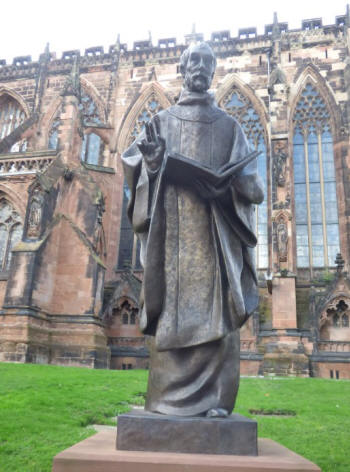
Architecture and building are strong interests of mine. Now, my main
preoccupation is vernacular architecture, particularly the vernacular
architecture of the South Yorkshire and Derbyshire Pennines, and above all,
the farm buildings and other buildings with stone walls and stone roof tiles
of the region. But I still have a strong interest in bigger, grander
buildings.
Many years ago, I used to include parish churches and
cathedrals in what could be called 'study visits' outside the area. Two of
the books I used, and still have, are 'English Parish Churches' by Graham
Hutton and Olive Cook and 'The Cathedrals of England' by Alec
Clifton-Taylor.
'English Parish Churches' has a very interesting
section 'On photographing cathedrals and parish churches' by Edwin Smith.
His experiences have similarities with my own, as well as significant
differences. My practice was very different. I never took photographs. I've
an aversion to relying upon the technology of photography. My emphasis is
and always has been upon the experience but since I started this Website, my
practice has changed. I"ve taken many, many photographs but almost always,
simply to provide illustrations for the site. I still emphasize the
experience rather than the record of the experience.
Alec
Clifton-Taylor was a wide-ranging writer on architecture and building,
including building stone. His view of the cathedrals was grounded in immense
knowledge and strong aesthetic values but my view of aesthetics is tempered
by other considerations.
Extracts from the section at the end of 'The
Cathedrals of England:, 'Visiting the Cathedrals: Summaries and Plans.'
Extracts from the summary of Lichfield Cathedral and its place in
the cathedrals of England:
'Leaving aside the parish-church
cathedrals, the four modern Anglican buildings ... and all those erected
since the eighteen-thirties by the Roman Catholic Catholics, England has
twenty-six cathedrals, of which, very conveniently, exactly half are of the
first rank.' He doesn't place Lichfield Cathedral in the list of cathedrals
'of the first rank.'
'Lichfield
At one time a
cathedral of surpassing charm, not all of which has evaporated, despite
restorations rendered necessary both by serious damage in the Civil War and
by the friability of the local red sandstone. The building is chiefly known
for its three stone spires, the Ladies of the Vale, the only English
cathedral to have these. Elaborate front with a profusion of platitudinous
Victorian sculpture ... The interior possesses in full measure the linear
richness so characteristic of English Gothic, yet wears an inescapably
Victorian air.'
He gives fuller comments on the successes and
weaknesses of the design in the main text. On some weaknesses:
'Of
the great display of Decorated sculpture on the west front of Lichfield
virtually nothing survives. All the statues, except five high up on the
north-west tower, are Victorian, and might pass as an advertisement for the
local hairdresser, every little wisp of hair on every figure having been
carefully 'set' in a fussy little curl.'
On the admixture of (purely
aesthetic) strengths and weaknesses in just one aspect of the building, the
West front:
' ... it turns out to be yet another example of the
screen type of front. The horizontal disposition is clear and good: the
tiers of figures under canopies are even carried round the octagonal
corner-turrets. The vertical articulation on the other hand, in contrast to
Wells, is very weak: about half-way down, the towers lose their identity
altogether.'
Throughout, Alec Clifton-Taylor's aesthetic standards
are exacting but very perceptive. Here, he writes about York Minster, which
is one of the cathedrals 'of the first rank:'
From the summary:
'Interior broad and lofty, yet lacking in magic: unfortunately, none of the
main vault is of stone ... York is famous for its stained glass; none of it
is of the very highest quality, but there is far more mediaeval glass here
than in any other English church, and its marked superiority to nearly all
Victorian and more recent glass will be apparent at once.'
Extract
from the main text, again on York Minster:
'This nave is the most
imposing example of the Decorated style in England, but not the loveliest.
The primary defect, once again, resides in the proportions ... York nave is
yet another English Gothic building which is too broad for its height ... In
other ways, too, this nave can be seen to fall short of the highest
standards of its brilliant period.'

